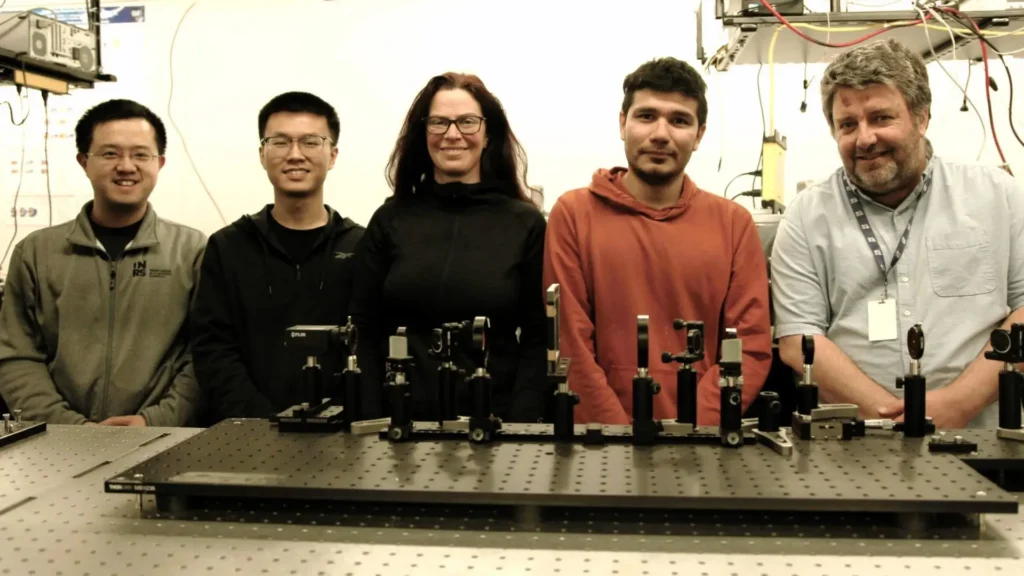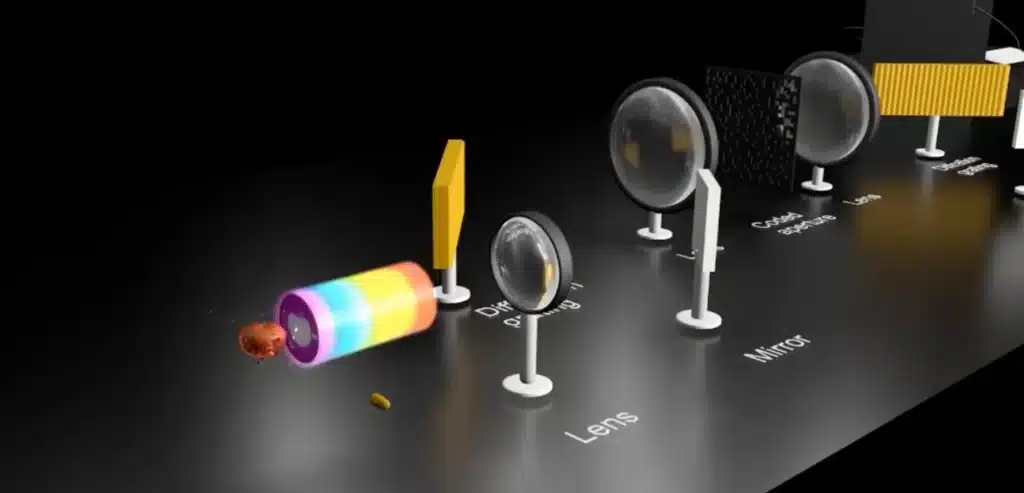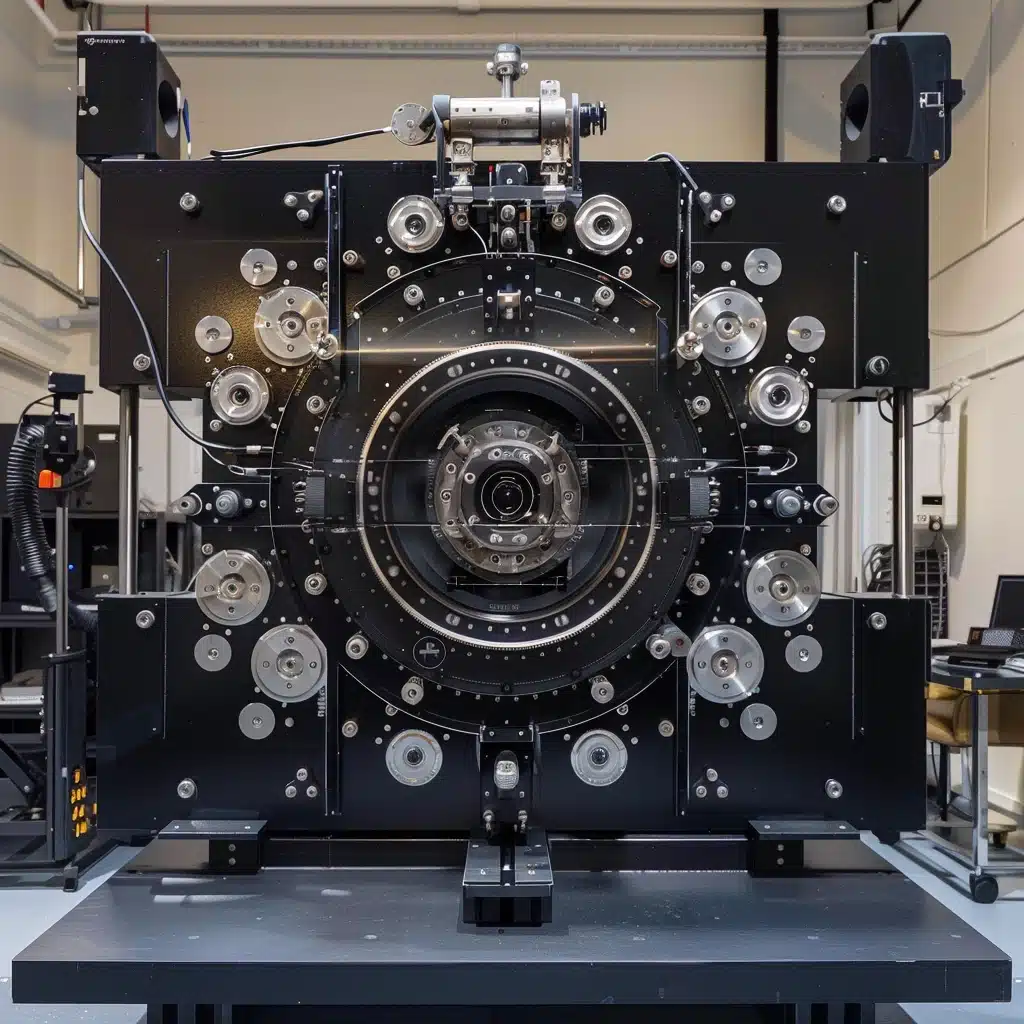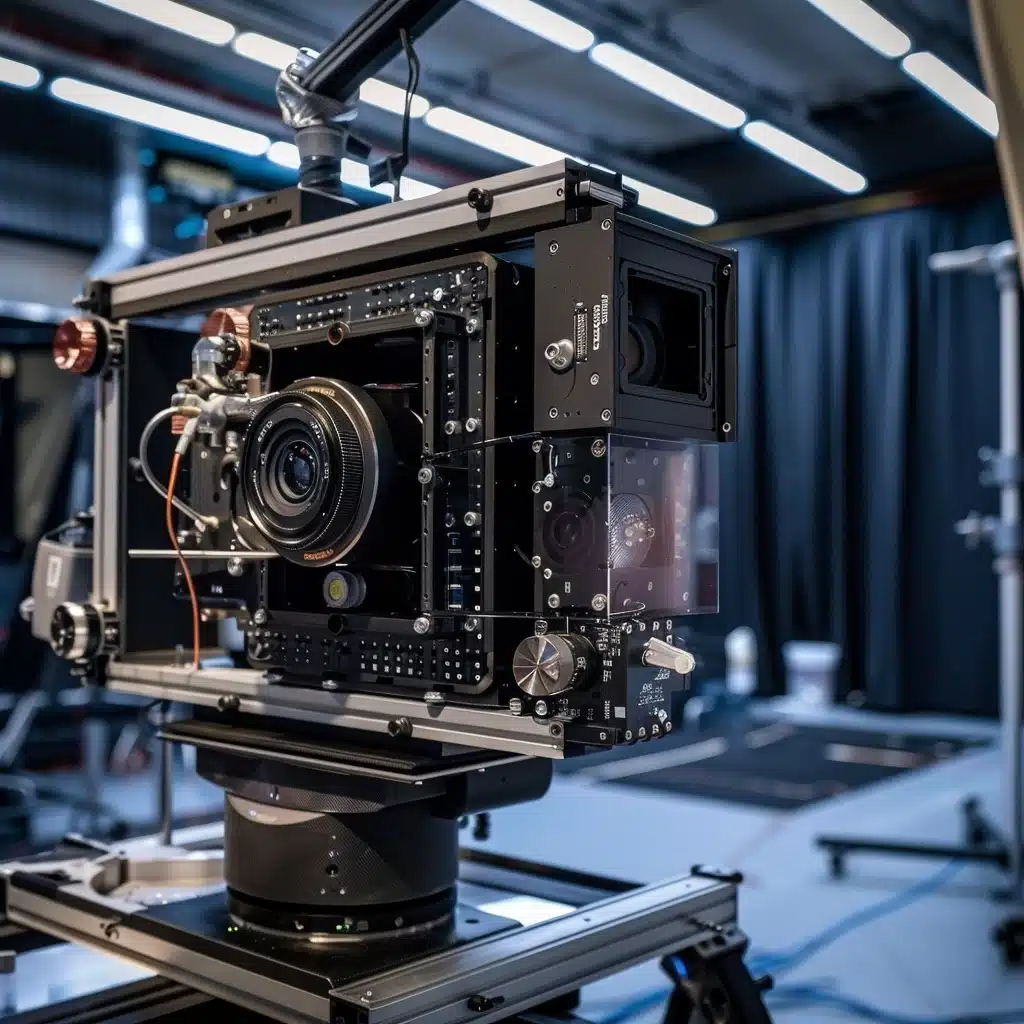New world’s fastest camera can shoot at 156.3 trillion frames per second
- The world’s fastest camera has just been revealed
- It can shoot an amazing 156.3 trillion frames per second.
- This allows it to capture ultrafast events and their evolution in milliseconds
Published on Mar 27, 2024 at 9:37 PM (UTC+4)
by Amelia Jean Hershman-Jones
Last updated on Apr 02, 2024 at 6:57 PM (UTC+4)
Edited by
Kate Bain
The world’s fastest camera has just been revealed and it can shoot at an amazing 156.3 trillion frames per second.
‘Swept-coded aperture real-time femtophotography’ aka SCARF, captures ultrafast events and their evolution in milliseconds.
The groundbreaking photographic technology was developed by a team of researchers from Énergie Matériaux Télécommunications at the Research Centre Institut National de la Recherche Scientifique (INRS) in Canada.
READ MORE! SpaceX droneship captures exquisite view of Falcon 9 launch and landing
The unprecedented and ultrafast camera system can record startlingly precise images.
In fact, it shoots at up to 156.3 trillion frames per second (FPS).
To throw that into sharp focus – professional cinematic cameras shoot at an FPS rate in the thousands.
This technology can record events that were previously impossible to capture.
That includes the ultrafast demagnetization of a metal alloy and transient absorption in a semiconductor.

As technology advances, photography just keeps getting faster, as the ‘The Slow Mo Guys’ previously caught the speed of light on camera at 10 trillion frames per second.
SCARF will allow for advances in physics, biology, chemistry, materials science, and engineering – and that’s just the beginning.
The Canadian team’s findings were published in the journal Nature Communications.
Scientific head of the Laboratory of Applied Computational Imaging at INRS, Professor Jinyang Liang, is a global pioneer of ultrafast imaging.
He made a significant advancement in 2018, laying the groundwork for SCARF.
Ultrafast camera systems previously captured individual frames, using rapid and repetitive measurements to gather data.

These images are then compiled into a string to create a ‘movie’ that recreates the movement.
This only allowed researchers to capture inert materials or repeatable occurrences.
This prevented the technique from observing anything fragile, non-repeatable, or ultrafast.
“Femtosecond laser ablation, shock-wave interaction with living cells, and optical chaos cannot be studied this way,” Professor Liang said in a statement about the limitations.
This void was filled, in part, by Professor Liang’s initial passive femtosecond imaging.
The T-CUP (Trillion-frame-per-second compressed ultrafast photography) system captured ten trillion frames per second.

“Many systems based on compressed ultrafast photography have to cope with degraded data quality and have to trade the sequence depth of the field of view,” Professor Liang said.
“These limitations are attributable to the operating principle, which requires simultaneously shearing the scene and the coded aperture,” postdoctoral fellow and co-first author of the study, Miguel Marquez added.
SCARF’s imaging modality does not shear the ultrafast phenomena, allowing for ultrafast sweeping of a static-coded aperture.
A ‘chirped’ ultrashort laser pulse traverses through the subject under observation.
Conceptualize the light as a rainbow spectrum: initially, the red wavelengths intercept, followed by orange, yellow, and going through to violet.

Due to the rapidity of the event, each subsequent ‘color’ captures the event in a different state, enabling the pulse to encapsulate the entire transformation in a very short space of time
According to the team, this allows individual pixels on a camera using a charge-coupled device (CCD) to receive full-sequence encoding speeds of up to 156.3 THz.
These outcomes can be achieved in reflection and transmission modes in just a single pass at adjustable frame rates and spatial scales.
SCARF will allow the observation of rare phenomena like shock wave mechanics in live cells or events that are ultrafast or non-repeatable.

These observations could aid the development of more effective pharmaceuticals and medical interventions.
Professor Liang’s team is teaming up with Axis Photonique and Few-Cycle to develop their patent-pending technology into something that’s commercially viable.
In other incredible photography news, Elon Musk has shared the ‘hottest video ever captured’ of Earth of the Starship plasma field.
Shockwaves from the same launch were also filmed.
Some of the images in this article were created using AI
DISCOVER SBX CARS: The global premium car auction platform powered by Supercar Blondie

All Supercar Blondie contributors undergo editorial review and fact-checking to ensure accuracy and authority in automotive journalism. After gaining her BA Hons in French and English at the University of Nottingham, Amelia embarked on a vocational diploma from the National Council for the Training of Journalists (NCTJ). This led to numerous opportunities, from interning at Vogue to being on the small team that launched Women’s Health magazine in the UK, which was named the PPA Consumer magazine of the year for three years running. As Health, Beauty and Fitness editor, Amelia personally received a Johnson & Johnson Award and was shortlisted for both PPA and BSME titles. Since then, Amelia has created content for numerous titles and brands, including the Telegraph, 111 Skin, Waitrose, Red magazine, Stylist, and Elle, as well as being Head of Content at Vitality and Editor in Chief at INLondon magazine. “My superpower is translating technical jargon about the mechanical workings of a supercar into a relatable story you’ll want to share with your friends after you’ve read it.” After joining the SB Media family as a senior journalist in September of 2023, Amelia’s role has evolved to see her heading up the SEO output of the editorial team. From researching the most ‘Google-able’ key terms to producing evergreen content - it’s been a time of hard work, growth, and success for the editorial team and the Supercar Blondie website. “I like to think of myself as a ‘method journalist’. In other words: I live and breathe whatever I am writing about. When writing about fitness, I trained as a personal trainer, and as a beauty editor, I completed an ‘expert’ in scent diploma with the Fragrance Foundation. “During my tenure at Supercar Blondie, however, I did something I never thought possible: I passed my driving test at the age of 36. One day I’d love to train as a mechanic to better understand what happens under the hood, too. “My sweet spot is providing readers with a ‘takeaway’ (read: something new they didn’t know before) after reading every one of my stories. While I don’t claim to be an expert in the automotive world, I know the experts and bodies in the field to rely on to provide our readers with an informative and thought-provoking story every time they visit the site.”




